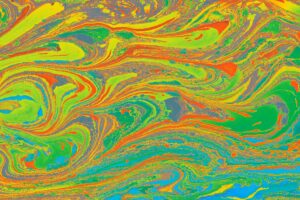In an era where mental health is a predominant concern, researchers are revisiting some unconventional forms of treatment. Among them are the psychedelic drugs, and their profound effects on the human brain have led to intriguing discoveries. These substances, typically associated with inducing hallucinations and altered states of consciousness, are believed to fundamentally change how the brain operates.
A closer look at these substances unveils their impact on several aspects of the brain’s function including our neural pathways, perception and the serotonergic system. Yet, the exact mechanisms through which the psychedelics’ induce these profound changes in consciousness are still shrouded in mysterious complexity.
Psychedelic substances often lead to hallucinations, a phenomenon that is attributed to their impact on the brain’s key neurotransmitter systems, primarily the serotonergic system. Instead of the typical pattern of sensory processing, psychedelics prompt the brain to rely more on speculation, imagination and memory to perceive reality. Tests involving drugs like LSD and psilocybin, substances known for their hallucinogenic properties, showed increased activity in the areas of the brain involved in dream sleep, causing a dreamlike state while awake.
Altered states of consciousness invoked by these substances are identified as unique instances of sensory overload and ego dissolution. During this state, individuals experience a feeling of unity and interconnectedness with the universe, a perception of time distortion, and often profound insights. Psychedelic substances are thought to suppress the brain’s ‘default mode network’, resulting in a silencing of the ego or the self. This ego dissolution can lead to heightened states of emotion and empathy.
Interestingly, psychedelics also provoke a phenomenon known as synesthesia, a sensory and perceptual anomaly where one type of stimulation evokes the sensation of another. For instance, hearing colors or seeing sounds. Precisely how synesthesia is activated by psychedelics is a topic of ongoing research, however, it is believed to be associated with a surge in brain connectivity.
The enhancement of brain connectivity facilitated by psychedelics represents a violation of the brain’s usual organization. In simpler terms, brain regions that don’t usually communicate suddenly begin to ‘talk’ and ‘listen’ to each other according to research. This could be akin to taking a highway on a daily commute but suddenly every single back road and alley comes into play.
Furthermore, studies have suggested that psychedelics could stimulate neuroplasticity, the ability of neural networks in the brain to change their connections and behavior in response to new information, sensory stimulation, development, damage, or dysfunction. Psychedelics, by effecting this dynamic reorganization of brain structures, can potentially shift cognitive processes and behavior in ways not previously possible.
However, it’s pertinent to note the potential risks involved in experimenting with these substances without proper guidance and research. It’s not that one’s brain is directly improved by psychedelic substances, but the experience can potentially open up individuals to different perspectives.
Understanding the mechanics of brain alteration through psychedelics can lay the foundation for therapeutic approaches for conditions such as major depression, anxiety disorder, PTSD, and addiction disorders. The aforementioned effects on the brain have enormous potential if harnessed correctly.
As our society grapples with complex mental health problems, the exploration of these out-of-the-box treatments invigorates the prospect of finding potent solutions within the realm of neuroscience and mental health. The psychedelic experience, should it be maneuvered with wisdom and caution, could indeed serve as a unique path to the exploration of the mind’s vast capacity.
Clearly, the effects of psychedelic substances on the human brain are more than just the instigation of vivid, fanciful imagery, and a distortion of perception; they are intricate, expansive, and tied to the core functions of the brain, hinting at the possibility of groundbreaking neuropsychological findings and treatments that lie ahead. Indeed, by venturing into the rabbit hole of altered consciousness, we may just have stumbled upon a whole new avenue for unlocking the brain’s potential.




